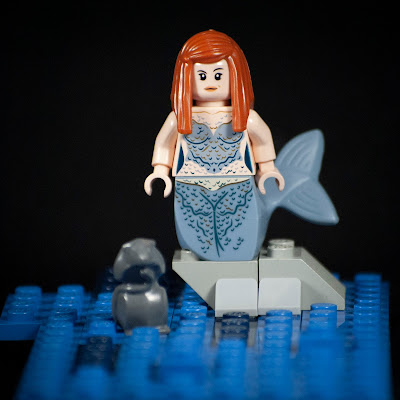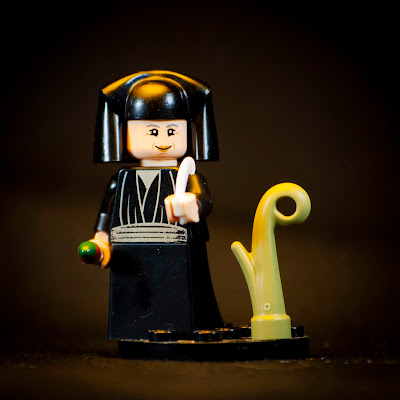St. Muirgen the Mermaid
Wait, an actual mermaid? That can't be real. Mermaids aren't real, so they can't be saints!
Well, yes and no.
Lifetime: 90 to 558
Region: Lough Neagh, Northern Ireland
Patronages: People who like mermaids; Storytellers; Converts from pagan faiths (I made these up.)
Iconograpy: Water; Otter; She's an actual mermaid
Feast Day: January 27
Region: Lough Neagh, Northern Ireland
Patronages: People who like mermaids; Storytellers; Converts from pagan faiths (I made these up.)
Iconograpy: Water; Otter; She's an actual mermaid
Feast Day: January 27
Muirgen was born Li Ban and lived as a princess in her father's palace. But one day, a spring opened up under the palace, swallowing the entire building into a lake. Li Ban's whole family drowned, but Li Ban's room remained intact and continued holding air. She lived trapped in this underwater room for a year with only her dog to keep her company.
After a year, Li Ban turned into a mermaid. Her faithful dog was also changed, becoming an otter to keep his master company. As a mermaid, Li Ban's lifespan was lengthened and she swam through the lake, playing with her otter for hundreds of years.
Li Ban learned to sing beautifully during this time, and was heard by fishers and others in boats crossing over her lake. Eventually, a monk was sent by the man who would become St. Comgall to Rome to bring a letter to the Pope. While boating over her lake, her heard her music. He believed it to be the song of angels and stopped his boat to ask them to come out.
Li Ban heard him and swam to the surface. The monk was astounded, but answered all her questions about his mission, which led to conversation about Christ and the gospels. Unfortunately, he couldn't stay and speak with her for long, as he had to continue his delivery to Rome. Li Ban was intrigued by the gentle monk and agreed to meet him again in one year.
On the arranged day, the monk returned, bringing with him a net so she could be taken to the shore. Li Ban entered the net and listened to the rest of the gospel story. She quickly agreed to be baptized and become Christian, even though that meant that she would become human again and her long life would be cut short.
However, there was an argument between the monk, Comgall, and a third monk over who got to baptize the legendary woman. The first monk insisted since he captured her he should get to bring her to his own monastery for baptism, but Comgall claimed that because the monk was on Comgall's mission and she was in the territory of Comgall's church, she should come to Comgall's church. The third monk argued that his net was used to bring her in so she should rightly come to his own abbey.
The monks decided to pray and let God decide. In response to their prayer, two wild ox appeared the next day. The monks yoked the ox to a chariot and placed Li Ban in it. The ox drove the chariot to a completely different monastery. As the senior priest in attendance, Comgall presided over her baptism.
Li Ban chose Muirgen as her Christian name, meaning "born of the sea", as a double reference to both her origin as a mermaid and her rebirth in baptism. Immediately after receiving the Sacrament, the newly-christened Muirgen died with a smile on her face. She was buried there at the monastery and many miracles purportedly occurred there in her name.
Muirgen's story comes to us mostly by way of Martyrology of Donegal, written in the 17th century, which collected feast days and other information from various older texts about Irish saints. Muirgen's capture is mentioned in The Annals of Ulster in 571 and The Annals of the Four Masters in 558, but neither of those entries make any mention of her being a mermaid.
The earliest known accounts of Muirgen as a mermaid are in Leabhar na hUidhre, or The Book of the Dun Cow, written in the eighth and ninth centuries. With all that in mind, Murigen's story has been doubted for its historicity for centuries.
However, even if we don't have to trust that an actual mermaid was captured and baptized, there's still some interesting meaning to be gained from the story. Some scholars have suggested that Muirgen was at one point an actual person whose story later got entwined with a legend of capturing a mermaid in the same area. Others believe that the story is more about how Christianity was quickly overtaking Ireland, and that the mermaid is only a symbol for Ireland's pagan roots, ultimately choosing eternity as a saint in heaven rather than continuing on Earth.





